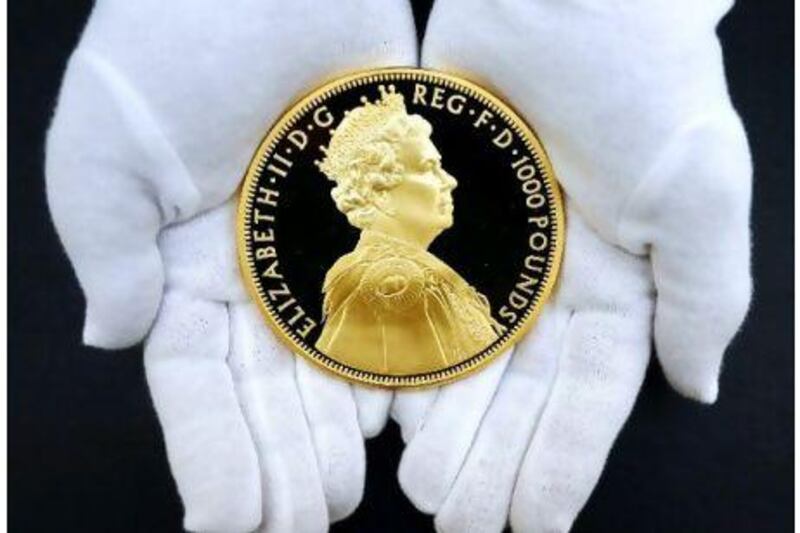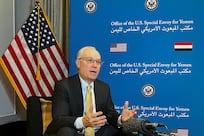Investing in old coins can reap good returns, especially if you know your history. But experts say novice collectors may have difficulty recognising key elements such as quality, rarity and market demand. Tony Glover reports
Anyone boarding a plane with tens of millions of US dollars worth of rare coins in their pocket while only appearing to carry a pocket full of loose change is likely to be either a successful criminal or a keen numismatist.
Numismatics is the study or collection of currencies, and the collectors of rare coins are known as numismatists or numatists. Some are wealthy investors, while others only want to hold a piece of history in the palm of their hand.
According to Rick Pontario, the executive vice president of Stack's Bowers and Pontario, a major global auctioneer of ancient coins, rare coins have historically been a good investment over a 10-year period.
"Quality, rarity and demand are the key factors," says Mr Pontario.
A favoured way of establishing a coin's value without selling it at auction is called "slabbing".
This involves having a coin valued by a professional on the grounds of quality, rarity and demand, and placed in a sealed transparent classic case to preserve its condition.
But while this service may be reassuring for the novice collector, professionals in the business of rare coins are sceptical of the true value of slabbing.
"How accurate is any valuation? Something could be valued for £1 million [Dh5.83m] by the world-famous London auction house Sotheby's and go for only a hundred thousand under the hammer," says Malcolm Bord, a partner at the London-based Gold Coin Exchange.
It is often hard to judge the exact value of a coin on the basis of its rarity. This, like beauty, is in the eye of the beholder and may depend on the nature and condition of the purchaser's collection.
For this reason, gold coins are often of particular interest to collectors who value preserving their investment. Gold prices have a habit of rising over the mid to long term, particularly in times of economic turmoil.
It would, therefore, be wrong to call someone who is only interested in the weight of their gold collection as a "collector".
There are, however, some eminently collectable gold coins. One example is a rare US$20 double eagle coin minted in 1933, which went for a record $7.59m when auctioned at Sotheby's in 2002.
But new collectors may prefer to invest in more affordable gold coins, which may interest future collectors.
Recent examples are the Cena commemorative gold and silver coins that were minted to mark the World Energy Forum in Dubai this year.
The face of the two coins depict the name of the state in Arabic and English, along with the portraits of Sheikh Khalifa, President of the UAE, and Sheikh Mohammed bin Rashid, Vice President of the UAE and Ruler of Dubai.
The back of the coins depict the logo, "World Energy Forum 2012-Dubai" in Arabic and English.
Other examples include Queen Elizabeth II's Diamond Jubilee coins. These commemorate the 60th anniversary of the queen's coronation, which was celebrated during the summer. Each coin is 99.999 per cent pure gold and has a face value of £1000.
But gold coins are not always the most historically interesting. Some silver Islamic coins not yet popular on the international coin market, for instance, still represent true value for the true collector.
A silver dirham coin from Caliph Al Walid's historically fascinating era was advertised online with a price tag of only $50.
Caliph Al Walid expanded the Umayyad Empire from 705 to 715, but instead of forcing the conquered Jews and Christians to convert to Islam, he gave them a financial incentive by charging non-Muslims extra taxes. He also made Arabic the official language of the Middle East.
But another silver dirham from the same Caliph Al Walid era is worth more than $1,000.
Spotting the difference between one ancient coin and another requires considerable numismatic skill, but a growing number of investors worldwide are prepared to acquire a little historical knowledge along with their investment.
After developing some knowledge of coins, the novice collector is faced with a bewildering array of methods of buying them.
These range from buying at Sotheby's auction house in London to ordering them via mail order or, increasingly, over the internet.
Despite the growing popularity of the internet, the favoured method involves going into a traditional coin shop. Aside from the obvious advantages of being able to handle coins before purchase, human interaction is a crucial part of becoming a serious collector or investor.
"Knowledge is king. If you become a regular shop customer, you open the door to many discussions with the owner/employees. These discussions can often be highly valuable," the 2013 US Coin Digest advises.
Online auction sites such as eBay are also an increasingly popular way to buy and sell coins. The disadvantage is that, unlike conventional auctions, there is no opportunity to handle the coins before deciding what to bid for.
Many coin collectors also find it useful to order coins that have been advertised in the mail. But the US Coin Digest warns that care must be taken by the buyer to ensure that the price advertised matches the quality and state of the coins on offer.
The world's stock of ancient coins is also periodically increased by the reappearance of coins from the past.
A pot of gold coins from the Crusades, for instance, has been unearthed in Israel. The coins had been buried by the Knights Hospitallers in 1265. Immensely valuable even in the 13th century, the gold dinals have yet to be accurately valued.






